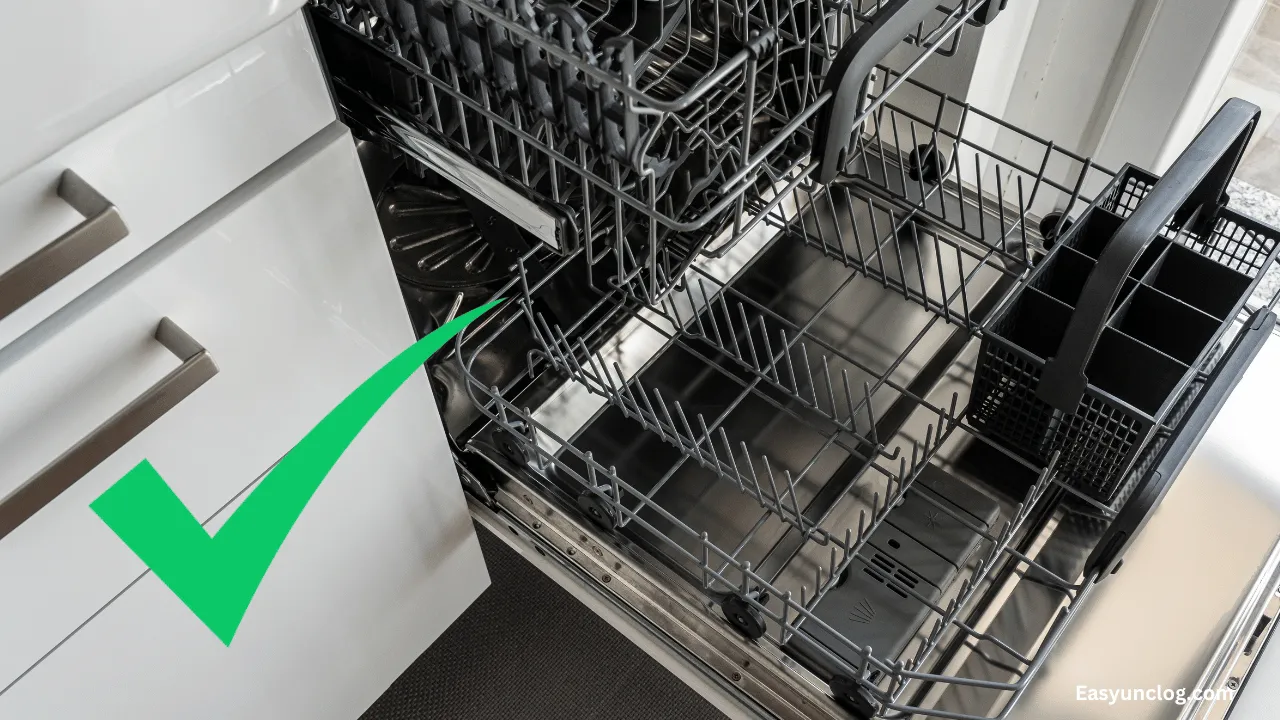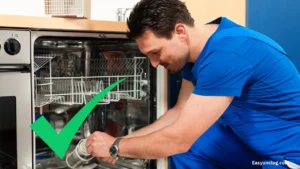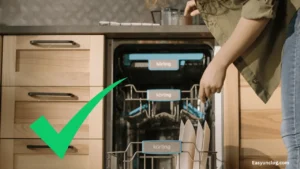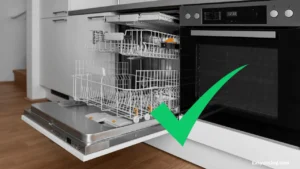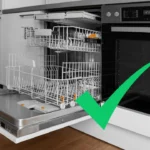A clogged dishwasher drain hose is a common household issue, leading to water backing up and potentially damaging your kitchen. Understanding how to unclog this vital component of your dishwasher effectively will save you time, money, and the hassle of dealing with water damage.
In this comprehensive guide, we’ll walk you through the steps to diagnose, unclog, and prevent future clogs in your dishwasher drain hose.
A dishwasher is essential in many homes, saving time and ensuring clean, sanitized dishes. However, like any appliance, it can face issues, with a clogged drain hose being one of the most common.
If not addressed, this problem can lead to ineffective cleaning and cause water damage. Fortunately, unclogging a dishwasher drain hose is a task most homeowners can accomplish with some know-how and essential tools.
Contents
- 1 Understanding Your Dishwasher’s Drainage System
- 2 Preparation for Unclogging
- 3 Step-by-Step Guide to Unclogging the Drain Hose
- 4 Preventing Future Clogs
- 5 Conclusion
- 6 FAQs
- 6.1 1. How often should I check my dishwasher’s drain hose for clogs?
- 6.2 2. Can I prevent my dishwasher’s drain hose from getting clogged?
- 6.3 3. What do I do if the clog is not in the drain hose?
- 6.4 4. Can using too much dishwasher detergent cause clogs?
- 6.5 5. How do I know if my dishwasher’s air gap is clogged, and how can I fix it?
- 6.6 6. What should I do if water leaks from the dishwasher door?
Understanding Your Dishwasher’s Drainage System
Before tackling a clog, it’s helpful to understand the components of your dishwasher’s drainage system and how clogs can occur.
Components of the Dishwasher Drainage System
- Drain Hose: This flexible pipe connects the dishwasher to the drain under the sink or the garbage disposal. It’s where clogs most frequently occur.
- Pump: The dishwasher pump forces water through the drain hose.
- Filter: Located at the bottom of the dishwasher, the filter traps large food particles and debris.
- Air Gap: If present, this prevents dirty water from siphoning back into the dishwasher. It’s usually located on the top of the sink.
How Clogs Form
Clogs can form from a buildup of food particles, grease, and soap scum over time. These materials stick to the walls of the drain hose and gradually accumulate until water can no longer pass through effectively.
Preparation for Unclogging
Safety First
Before you begin, ensure safety by disconnecting the dishwasher from the power supply. If you cannot unplug it directly, turn off the power from your home’s electrical panel. Also, turn off the dishwasher’s water supply to prevent accidental leaks or flooding while working.
Gather Your Tools
You’ll need a few essential tools to unclog your dishwasher drain hose:
- A pair of pliers
- A screwdriver
- A bucket or large bowl
- A towel or sponge
- A straightened wire hanger or a plumber’s snake
Step-by-Step Guide to Unclogging the Drain Hose
Step 1: Locate and Remove the Drain Hose
First, locate the drain hose under the sink, which connects to the drain or garbage disposal. Use pliers to loosen the clamps holding the hose in place. Before completely removing the hose, place a bucket or bowl beneath it to catch any water that may spill.
Step 2: Inspect and Clean the Hose
Once removed, inspect the hose for apparent clogs. You can try flushing it out with water from a tap or gently removing any blockages with a straightened wire hanger. A plumber’s snake can be effective for more stubborn clogs.
Step 3: Check the Dishwasher Pump and Filter
While the drain hose is disconnected, it’s a good opportunity to check the dishwasher’s filter and pump for obstructions. Remove any debris to ensure a clear path for water to flow.
Step 4: Reattach the Drain Hose
After clearing the hose and checking other components, reattach the drain hose to the dishwasher and the drain under the sink or the garbage disposal. Ensure the clamps are tight to prevent leaks.
Step 5: Run a Test Cycle
Before calling it a job well done, run a short cycle on the dishwasher to ensure that water flows freely and the issue is resolved. Keep an eye out for any leaks under the sink.
Preventing Future Clogs
Prevention is critical to avoiding future clogs in your dishwasher’s drain hose. Here are some tips to keep your dishwasher running smoothly:
- Rinse Dishes Before Loading: Removing food particles and grease before loading can significantly reduce the risk of clogs.
- Regularly Clean the Filter: Check your dishwasher’s manual for instructions on removing and cleaning the filter. Doing this monthly can prevent debris from reaching the drain hose.
- Use the Right Detergent: Some detergents are better at preventing soap scum buildup. Experiment with different types to see which works best for your dishwasher.
- Periodic Vinegar Rinse: Running an empty dishwasher with a cup of vinegar can help dissolve grease and buildup, keeping the drainage system clear.
Conclusion
Unclogging a dishwasher drain hose is a manageable task that can prevent more significant plumbing issues. By following the steps outlined above, you can ensure your dishwasher continues to operate efficiently.
Regular maintenance and preventive measures will also help extend the life of your dishwasher and keep your dishes sparkling clean.
Remember, if you encounter complex issues beyond a simple clog, it may be time to call a professional plumber to ensure your dishwasher is in optimal working condition.
FAQs
1. How often should I check my dishwasher’s drain hose for clogs?
Inspecting and cleaning your dishwasher’s drain hose at least once a year is a good idea as part of regular maintenance. However, if you notice your dishwasher isn’t draining properly or there’s water backing up, check the drain hose immediately.
2. Can I prevent my dishwasher’s drain hose from getting clogged?
You can significantly reduce the risk of clogs by rinsing dishes to remove large food particles and grease before loading them, cleaning the dishwasher’s filter regularly, using the correct type of detergent, and occasionally running an empty cycle with vinegar.
3. What do I do if the clog is not in the drain hose?
If the drain hose is clear and you’re still experiencing drainage issues, check other components, such as the dishwasher’s filter, pump, and air gap (if installed). Clogs can also occur in these areas.
4. Can using too much dishwasher detergent cause clogs?
Yes, using too much detergent can contribute to the buildup of soap scum, which can narrow the passage within the drain hose and lead to clogs. Follow the manufacturer’s recommendations for detergent use.
5. How do I know if my dishwasher’s air gap is clogged, and how can I fix it?
If your dishwasher has an air gap installed on the countertop above the sink, it can get clogged with debris. Signs include water flowing from the air gap vent or poor dishwasher drainage. To clean it, remove the cap and remove any debris with a wire or brush.
6. What should I do if water leaks from the dishwasher door?
Water leaking from the door is typically unrelated to a clogged drain hose but could indicate a worn door seal, improper dishwasher leveling, or overloading. Check these areas to resolve the leak.

